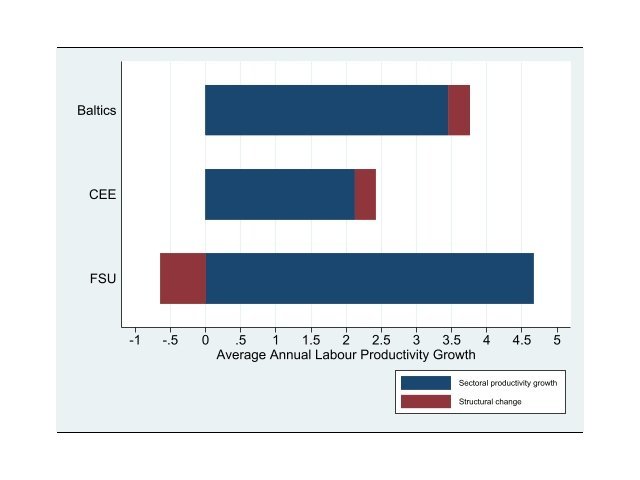Structural Transformation in Transition Economies: New Data and New Insights
| Date: | 09 January 2024 |

The new Economic Transformation Database of Transition Economies [ETD-TE] allows for analysis of the inter-industry structural change performance of the countries of the former Soviet Union for the first time. In the period 1990-2019 - the three decades since the Soviet dissolution - the former Soviet republics experienced growth-reducing structural change; i.e. workers moved on average from more to less productive sectors. This is in stark contrast to the former-centrally planned economies of the European Union*, for which data is available from EU-KLEMS, which on average experienced growth-enhancing structural change across the same time period. Figure 1 demonstrates this sharp difference.
Analysis of the ETD-TE further highlighted that this pattern of growth reducing strutural change was not driven purely by specific countries or sub-regions, but was concentrated in the first decade of transition. Comparison with other world developing and emerging regions, for which data is available from the ETD, showed that the former Soviet Republics were the only region which experienced negative structural change across the full time period when compared with Asia, Latin America, and Sub-Saharan Africa.
The ETD-TE database can be accessed in full and for free here; the analytical paper is published as GGDC research memorandum 196, can be found here. This paper also contains a full overview of the data construction techniques, sources, and methods.
* Bulgaria, Croatia, Czech Republic, Hungary, Poland, Romania, Slovakia, Slovenia


